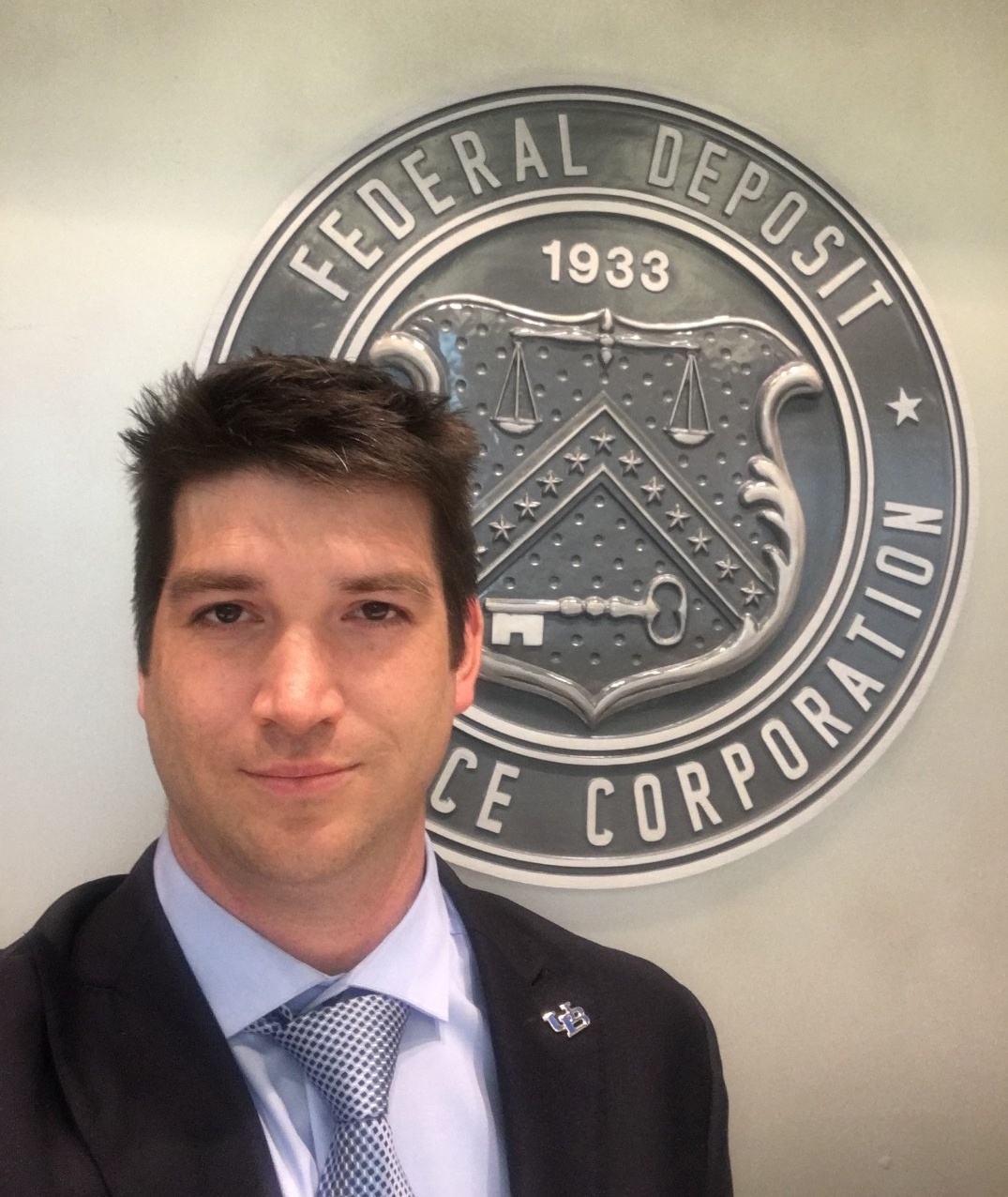Insights
News about faculty and their research
On this page:
Meet our new faculty
School of Management faculty are known for being big thinkers and big doers. They upend theories, drive change and are recognized worldwide as thought leaders in their respective disciplines. Last fall, the school welcomed seven new faculty members to its already impressive lineup.

Clinical Assistant Professor of Management Science and Systems
Joana Gaia has a doctorate from the University at Buffalo School of Management, and her research interests include decision support systems, health information systems, emergency management and design science.
Fun fact: Gaia met Queen Elizabeth II when she was 10 and the queen visited her school. Gaia was chosen to be part of a gymnastics demonstration and says during rehearsals, they spent more time practicing how to curtsy and what to say if the queen addressed them than actually doing gymnastics.

Pianpian Kong
Assistant Professor of Marketing
Pianpian Kong earned her doctorate in marketing from the University of Rochester Simon Business School. Her research includes platform and tied-good markets, vertical relationships and spatial competition in retail, and structural modeling.
Fun fact: Kong has played badminton since junior high and played varsity in college. She competed in tournaments in Rochester, taking first place in women’s singles and doubles.

Richard Kraude
Assistant Professor of Management Science and Systems
Richard Kraude received his doctoral degree from Michigan State University’s Eli Broad College of Business, majoring in operations sourcing management. His research focuses on risk management, new product development and sustainability.
Fun fact: Kraude is an active member of the maker community, meaning he likes to build and invent things. His creations include a cherry platform bed frame, stereo system and weather station.

Ping Liu
Assistant Professor of Finance
Ping Liu graduated from the University of Illinois at Urbana-Champaign with a doctorate in finance. His research expertise lies in macroeconomics, corporate finance and labor economics, with particular focus on the relationship between individual firms’ financial decisions and their impact on the economy at a macroeconomic level.
Fun fact: Liu is a dedicated runner, striving for three miles every other day, and an avid player of Warcraft III.

Jesse Miller
Clinical Assistant Professor of Organization and Human Resources
Jesse Miller has a doctorate in English literature from UB. His research expertise includes business and professional writing, writing in the disciplines, experiential learning and 20th- and 21st-century literature.
Fun Fact: Miller plays alto sax and is in a band called Lalalalangue.

Visiting Assistant Professor of Accounting and Law
Brandon Szerwo completed his doctorate in business administration from the University of Washington Foster School of Business, and his research focuses on understanding financial reporting quality and audit quality, regulation and corporate governance.
Fun fact: Szerwo’s first direct exposure to quasi-experimental research was volunteering in South Africa to gather data on large, wild mammals, such as elephants and lions, while on a sabbatical from Deloitte & Touche.

Clinical Assistant Professor of Accounting and Law
Ian Tarrant holds a doctoral degree in business administration (accounting) from Pennsylvania State University. He is an expert in market microstructure, executive compensation and mandatory and strategic voluntary disclosure.
Fun fact: Tarrant is an avid fan of women’s college volleyball.
Deep discounts work for supermarkets

For grocery retailers, the tried-and-true strategy of deep discount promotions is a successful one, according to a new study from the School of Management.
Published in the Journal of Retailing, the study found that significantly marking down prices on items at supermarkets does bring more people into stores, and increases profits and sales — especially when the items are the kind most people buy, such as milk and eggs. In addition, promotions of name-brand items are more effective than those of generic or store-brand items.

Talukdar
“Deep discount promotions have continued to be popular, despite the lack of research evidence about their impact,” says study co-author Debabrata Talukdar, professor of marketing. “Most studies analyzed how price promotions affected a particular brand or product category, but we looked at how these discounts impacted the amount of traffic to the store, amount of sales per transaction and overall profit margin.”
The authors analyzed transaction data from 55 weeks across 27 product categories in 24 stores of a large regional U.S. supermarket chain. They supplemented transaction data with information from the stores’ weekly flyers and advertising, as well as those of their competitors.
Talukdar warns that while these promotions work, grocers shouldn’t go overboard, particularly within the same category of items.
“Discounting more items in a category actually leads to lower store margins,” says Talukdar. “This suggests that the costs of the discounts is not offset by the profits generated from the sale.”
In addition, the study authors recommend restricting deep discounts to items that aren’t frequently put on sale by nearby competitors.
“Retailers run the risk of entering into a destructive, prisoner’s dilemma type of price war if they promote the same items in the same weeks,” says Talukdar.
Talukdar collaborated on the study with lead author Dinesh Gauri, professor and Walmart Chair in Marketing, University of Arkansas Sam M. Walton College of Business; Joseph Pancras, associate professor of marketing, University of Connecticut School of Business; and Brian Ratchford, Charles and Nancy Davidson Chair in Marketing, University of Texas at Dallas Javeen Jindal School of Management.
Wolfe presents fintech research at FDIC

Traditional banks can take days or weeks to approve a loan request. But financial technology (fintech) companies often grant personal, unsecured loans in seconds — and that speed is taking business away from small, regional banks, according to research by Brian Wolfe, assistant professor of finance.
This fall, Wolfe and his co-author, Woongsun Yoo, assistant professor of finance at Saginaw Valley State University, presented their findings at the Federal Deposit Insurance Corp.’s (FDIC) highly competitive bank research conference and at the Toronto Fintech Conference at Ivey Business School.
Their study — the first to examine the effect fintech companies have on banks’ loan volume — showed that for every dollar fintech platforms gave in personal, unsecured loans, more than 25 cents came out of a small bank’s portfolio. Meanwhile, national banks were unaffected.
Fintech companies allow individual investors to fund loans and, in some cases, even give small banks access to come on as investors through their platforms, significantly diluting the negative effect on those banks’ portfolios.
“Clearly, fintech companies are changing the banking landscape — and this is just the beginning,” Wolfe says. “Our results could mirror how things will unfold for other segments, like mortgages.”
For Wolfe, presenting at the FDIC was a thrill many years in the making.
“You learn about the FDIC all through school, even back in high school history class,” he says. “It was nerve-wracking, but exciting, to present a topic we’re passionate about for people who care and could be affected by our work.”
How to get patients to share electronic health records

Education is the key to getting patients to share their medical records electronically with health care providers, according to a new School of Management study.
Published in the Journal of Medical Internet Research, the study found that while patient education has typically focused on the benefits of electronic records, privacy concerns are what keep most from signing up.
“When a patient decides not to share their records electronically, it can result in increased costs, medical errors and undesired health outcomes,” says study co-author Lawrence Sanders, professor of management science and systems. “But patients are more concerned about privacy, and health care providers should make it a priority to let them know about all the policies and security measures in place to protect them.”
By making patients more aware of existing privacy policies and security measures, health care providers create an environment where patients are more likely to share personal health information, and therefore reduce costs and errors, the researchers say.
The authors analyzed results of a nationwide health survey with more than 1,600 participants, which included questions about health conditions and lifestyles, intention to share personal health information and more. Beyond patient education, they found educating health care providers is just as important.
“Physicians need to know how important their relationships are with people who come to them for care,” says Joana Gaia, clinical assistant professor of management science and systems. “As doctors spend more time with patients and involve them in decision-making processes, they will be more willing to share their medical records electronically — and see the benefits of doing so.”
Sanders and Gaia collaborated on the study with Mohamed Abdelhamid, assistant professor of information systems at the California State University Long Beach College of Business Administration. Gaia and Abdelhamid were lead authors.
Gender differences in leadership
By Emily Grijalva, assistant professor of organization and human resources

Last year, five undergraduates helped me investigate gender differences in leader emergence, or the degree to which an individual is perceived as a leader by others. After gathering every study documenting gender and leader emergence, we combined the data to draw an overall conclusion. While the gender gap has decreased over time, our research revealed that, all things being equal, men are still more likely than women to emerge as leaders.
National statistics clearly illustrate this disparity: According to the U.S. Bureau of Labor Statistics, women occupy 39 percent of managerial roles. Just 4 percent of CEOs and 20 percent of board members at S&P 500 companies are female.
Research attributes much of the gap to gender stereotypes. Women are seen as nurturing, kind and compassionate, while men are viewed as independent, assertive and dominant — traits more closely aligned with our expectations of a typical leader. Thus, because of society’s often unconscious stereotypes, men will, on average, be perceived as more leader-like than women.
How can organizations limit the influence of gender bias? First, leaders should make employees aware of our natural tendency to overvalue agentic attributes in leaders. In fact, while communal qualities, like kindness and compassion, are often seen as less leader-like, research shows these same traits increase a leader’s effectiveness.
Past research indicates people are less likely to depend on stereotypes when they spend more time together and are held accountable for their decisions. Therefore, when hiring, try to meet candidates multiple times and assign interviewers who will work closely with the new employee.
Excerpted from Grijalva's post for On Leadership, the School of Management’s blog. Read more at mgt.buffalo.edu/onleadership.
